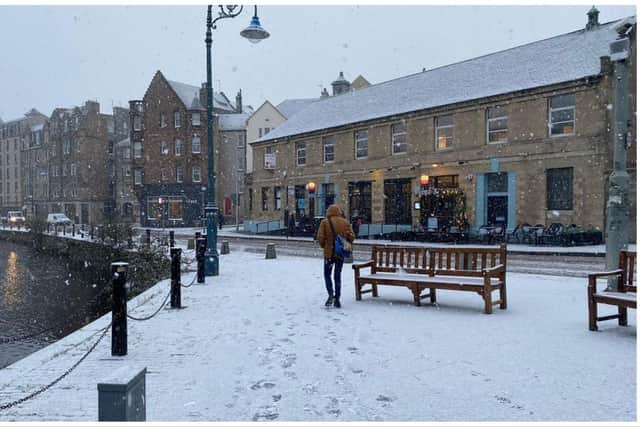This is Edinburgh’s chances of a White Christmas as bookies make predictions for festive snow
and live on Freeview channel 276
With temperatures plummeting, the odds of snow on the December 25 seem to be increasing – and now a bookies has named Edinburgh amongst the UK cities with the best chance of a White Christmas this year.
Ladbrokes’ latest betting odds for snow to fall anywhere in the UK on Christmas Day are 1/2, and it says Edinburgh and Newcastle are the “most likely destinations to see snow”.
Advertisement
Hide AdAdvertisement
Hide AdBut the Met Office urged people to take a prediction this far in advance with a “pinch of salt”.


Met Office spokeswoman Nicola Maxey said: “Christmas is still a month away, so it is impossible with this lead time to have any confidence in a detailed forecast.
“There is often a fine line between who sees snow and who sees rain. Sometimes just a fraction of a degree Celsius change in temperature can make the difference between rain or snow falling, making forecasting snow weeks in advance extremely difficult.
“The definition of a white Christmas most widely used is for a single snowflake to be observed falling in the 24 hours of December 25.
Advertisement
Hide AdAdvertisement
Hide Ad“Therefore, snow falls ‘somewhere’ in the UK for more Christmas days than not. But widespread snow falling and lying on the ground is rather more infrequent.
“For widespread and substantial snow on the ground on Christmas Day we have to go back to 2010.
“There was a cluster of a few really cold Christmases in the 1830s and early 1840s that preceded the publication of a Christmas Carol by Dickens in 1843, maybe contributing to our ongoing national association of snow and Christmas.
“Christmas comes at the beginning of the season for snow. Wintry weather is more likely in the deepening cold of early January.
Advertisement
Hide AdAdvertisement
Hide Ad“White Christmases were more frequent in the 18th and 19th centuries, even more so before the change of calendar in 1752, which effectively pushed Christmas day back by 12 days.
“On average you would expect to see 3.9 days where snow was recorded falling in December in the UK but 5.6 days in February.”
Comment Guidelines
National World encourages reader discussion on our stories. User feedback, insights and back-and-forth exchanges add a rich layer of context to reporting. Please review our Community Guidelines before commenting.
